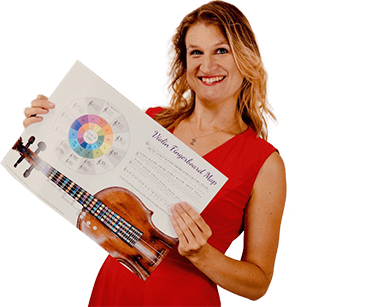How to play from sheet music when you have NO idea how it should sound | Violin Lounge TV #385
I’ll show you a quick and easy way in which you CAN learn how ANY piece sounds exactly
Ideal for unknown pieces and tricky orchestra scores
Maybe you want to play a lesser known piece… or you play a tricky 2nd violin part in your orchestra and in recordings you can’t really hear this individual part.
In the end of the video I’ll show you a quick and easy way in which you CAN learn how ANY piece sounds exactly, but before that there’s something important I’d like to discuss.
This is a modern problem, because we can find everything online. In the old days we had no recordings at all and sheet music was the way to record music. Later we had to save up our money to get an expensive LP or CD.
When you look at sheet music… what do see? Do you instantly hear the notes in your inner ear?
Just as you can hear the words and understand their meaning, structure and expression of text in a book.
Or do you just see notes indicating the grip on your instrument?
If you can’t hear pitch and rhythm when looking at sheet music and you’re not able to sing it, you need to work on your ear training.
We call this solfège. I have some bad memories about that I share in the video.
It’s important to establish a connection between sound, note, note name and grip in all possible combinations.
When you can’t sing it, you probably can’t play it or aren’t able to correct yourself while playing.
Lots of violin students don’t want to sing, while it’s vital for your musical development. We’re not robots hitting notes. We need to be able to speak our musical thoughts through our instruments.
Was this violin lesson video useful to you? Support my work by sharing it on Twitter:

Hi! I'm Zlata
Classical violinist helping you overcome technical struggles and play with feeling by improving your bow technique.
Some tips on ear training on the violin:
#1 Test yourself with simple sheet music
Form a connection between note and sound (pitch as well as rhythm), not just note and grip on your instrument by singing from the sheet music.
#2 Train your ears with an app
In the video I show Earpeggio, but there are many others. Share your favorite in the comments below!
Get an idea how it should sound by putting the notes in music notation software
Put the piece (or just that tricky bar) in Soundslice or your favorite sheet music software. In most software you can have a midi violin play this part, which at least gives you an idea on the pitch and rhythm.
Warning: still work on your musical ear and connection between notes and sound. Don’t just copy the midi violin in the software.


Dank je Zlata!
Ik kijk dus al járen naar de noten op papier en dank zij je uitleg van 7 oktober, kom ik ineens spróngen verder!
Ik was namelijk jarenlang zangeres en meende die “kwaliteiten” af te moeten leggen, om viool te kunnen gaan spelen….wát een ”eye opener”
was jou video van vandaag voor mij!
En wat een schattig dochtertje heb je
op de wereld gezet! ( ja, ze loopt nu toch!) Veel Liefde, Blessings en voorspoedige vooruitzichten, alleen voor jou.
Hartelijks,
Goed inzicht! En dankjewel!
Zlata this is jeff can you help me with a really good 30 minute practice routine that Would be productive a list To go by every day to practice
That entirely depends on your playing level and on what you’re working with. If you’re a beginner, do this warm up. In this video you can see my daily routine and make adjustments for yourself.